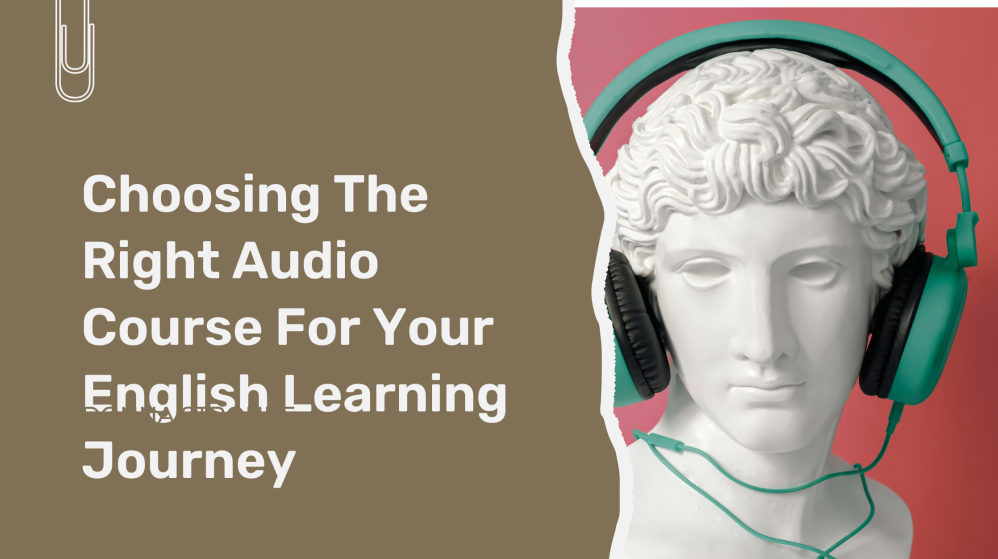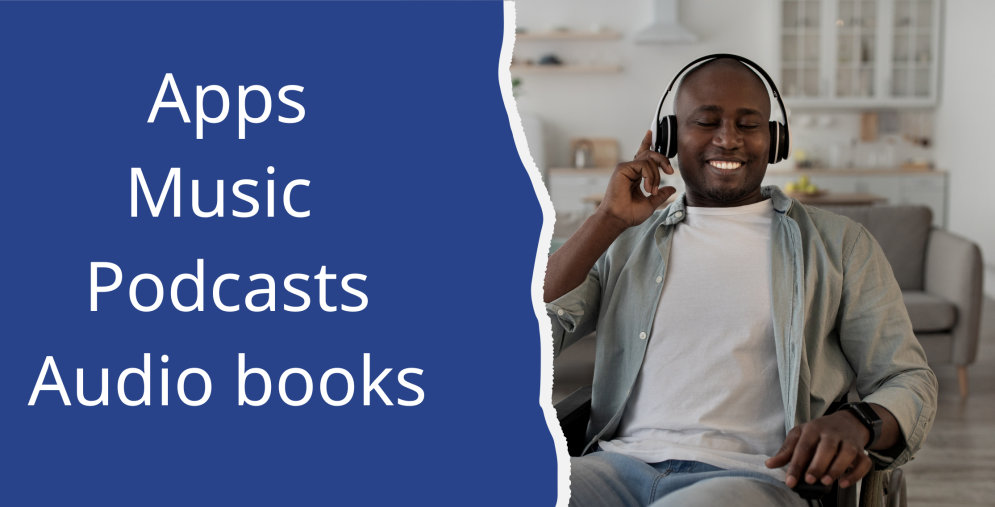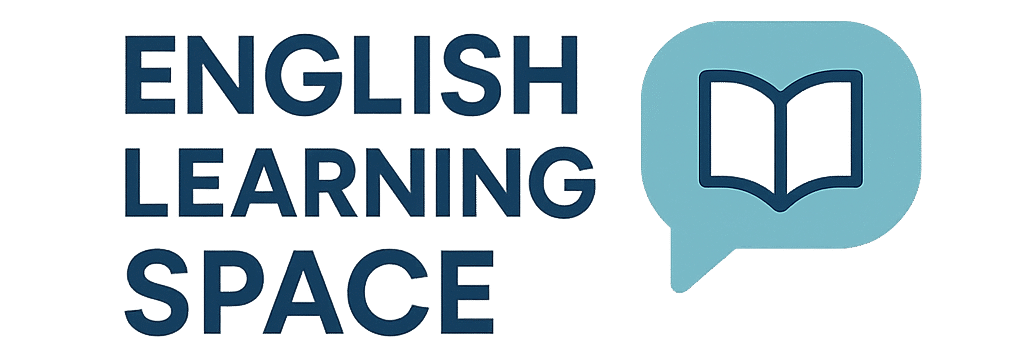 Identifying how you learn best is like discovering the missing piece of a puzzle. Knowing this can make your journey to mastering English smoother and more enjoyable.
Identifying how you learn best is like discovering the missing piece of a puzzle. Knowing this can make your journey to mastering English smoother and more enjoyable.
Let’s break this down a bit.
Some people are visual learners—they remember things better when they see them.
Others are auditory learners who excel when they hear information. And then there are kinesthetic learners who need to get hands-on with activities. Figuring out where you fit can help you pick an audio course that matches how you learn best.
Visual, auditory, kinesthetic: which one resonates with you?
If you’re not sure, there are plenty of online quizzes and assessments that can help you pinpoint your learning style.
Try this one. EducationPlanner.org Learning Styles Quiz
Spend a little time with these tools—they’re worth it. Knowing whether you soak up information by seeing, hearing, or doing will help narrow down your options. It’s like shopping for clothes that fit; the better the fit, the more comfortable you’ll be.
Audio courses offer a unique advantage.
They cater specifically to auditory learners who grasp information through listening. But they can also benefit others.
For instance, a visual learner might find that pairing audio courses with written notes makes a strong combo. Kinesthetic learners might use audio lessons as a springboard for interactive activities. The flexibility of audio courses means there’s something for everyone.
Self-assessment is your friend here.
Tools like VARK (Visual, Auditory, Reading/Writing, Kinesthetic) questionnaires https://vark-learn.com/ can be handy. Spend some time reflecting on past learning experiences. When did you feel most engaged? Was it during a lecture, a hands-on activity, or reading a book? Your history can offer clues about your learning style.
Choosing the right audio course starts with knowing yourself. Make the effort to understand your learning style first. It’ll pay off when you’re able to pick an audio course that feels just right for you. Remember, a well-fitted audio course not only makes learning easier but also more fun.
Exploring the Different Types of English Learning Audio Courses

Finding the right audio course for learning English requires some digging into the various formats available. Each format offers unique features, and your choice will depend on what suits your routine and learning style best.
First up, podcasts.
These are great for easing into English learning without feeling overwhelmed. Many podcasts offer different levels, from beginner to advanced, and cover a wide range of topics. Podcasts are often free, making them a cost-effective way to improve your English skills. They also allow for passive learning; you can listen while doing other tasks.
Next, apps. Language learning apps offer a blend of audio lessons, interactive exercises, and progress tracking. They’re perfect for structured learning on the go. Apps often come with gamified elements that make learning fun and engaging. The interactivity offered by these applications can be a huge boost, especially if you like to test yourself as you learn.
Then we have audiobooks. These are fantastic for those who want to immerse themselves in the language through stories. Audiobooks can enrich your vocabulary and comprehension skills. Many platforms offer audiobooks in various genres, so you can pick what interests you. Some audiobooks come with text, giving you the option to follow along and reinforce your learning.
Another option is structured audio courses available through language learning websites or CDs. These often come with detailed lesson plans and are designed by language experts. They are usually subscription-based but offer a comprehensive learning experience. This format works well if you prefer a more traditional, classroom-like structure.
Passive and interactive experiences cater to different needs. Podcasts and audiobooks tend to be more passive, letting you listen at your own pace, while apps and structured courses demand more active engagement. Knowing your preference helps in selecting the right type of course.
Finally, consider the subscription-based vs. one-time purchase models. Subscription-based models often include continuous updates and support, which can be a great investment if you’re in it for the long haul. On the other hand, one-time purchases might be easier on the wallet initially but may not offer the same ongoing benefits.
By exploring these different formats, you can find the one that best suits your needs and fits seamlessly into your lifestyle. Selecting the right type of course is a significant step toward making your English learning journey effective and enjoyable.
Evaluating the Content Quality and Teaching Methods of Audio Courses
Content quality is the heart of any good learning resource, and audio courses are no exception. When choosing an audio course, one crucial factor is whether native speakers are involved. Learning from native speakers ensures you get the correct pronunciation, intonation, and cultural nuances that non-native speakers might miss.
Next, consider the teaching methodology. Some audio courses immerse you directly into the language, while others take a more traditional, step-by-step approach. Immersive courses drop you in at the deep end, using only the target language. This can be highly effective for some, especially if you thrive on a challenge and want to get a feel for natural speech patterns early on. Traditional methods, on the other hand, might include explanations in your native language and build up your skills gradually.
Another aspect to look at is whether the course content is up-to-date and regularly refreshed. Language is always evolving, and an outdated course might miss out on modern slang, expressions, or common usage. Whether the creators of the content actively update and improve their materials can be a good indicator of the course’s quality and reliability.
User reviews and testimonials offer valuable insights. Pay attention to what other learners say about the course. Are there repeated mentions of useful features or persistent issues? Real-world feedback can help you gauge the course’s effectiveness and identify potential challenges.
Finally, check if the course offers trial periods or money-back guarantees. These can be your safety nets, allowing you to test the waters before committing fully. A trial run helps determine if the course aligns well with your learning preferences and goals without the risk of wasting money if it turns out to be unsuitable for you.
Balancing Cost and Value: Making an Informed Decision
Budgeting for your English learning journey is a practical step that can help you avoid financial stress down the line. Set an amount you’re comfortable spending to ensure you get the most out of your investment without overspending.
When comparing course prices, look at what each offers. Some may seem pricey but include additional resources like one-on-one tutoring sessions, downloadable materials, and access to exclusive content. Others might have a lower price tag but may lack these extras. Balancing what you get versus what you pay is key to making a smart choice.
Free courses can be appealing, but they have their trade-offs. They might not provide the depth or support that a paid course offers. However, free courses can be a good starting point if you’re testing the waters or supplementing other learning methods.
Think about long-term value. Sometimes, investing more upfront can save you money in the long run. Courses that offer continuous updates, community support, and a comprehensive curriculum might cost more but provide lasting benefits. It’s like buying a quality tool that lasts years versus a cheaper one you have to replace often.
Weighing the cost against the value involves looking beyond the price tag. Consider how the course fits into your overall learning journey and how it supports your goals. A well-chosen course can be an invaluable asset, turning your expenses into long-term gains.
Maximizing Your Learning Experience with Supplemental Resources
Pairing your chosen audio course with other learning tools can significantly boost your progress. Think of it as creating a comprehensive toolkit where each piece complements the others. While audio courses build your listening and comprehension skills, supplemental resources can reinforce what you’ve learned and add new dimensions to your study routine.
Books are a solid choice for those wanting to enhance vocabulary and grammar. Look for books that match your current level and interests. Working through these alongside your audio course can deepen your understanding and help solidify complex concepts.
Language learning apps can be another valuable addition. Apps like Duolingo or Memrise offer interactive exercises and games that keep you engaged and help lock in what you’ve learned from your audio lessons. These can be great for reviewing and practicing in a fun, low-pressure environment.
Don’t underestimate the power of flashcards. They’re excellent for quick review sessions and memorizing new words and phrases. Digital flashcard apps can make this process even more convenient with spaced repetition systems that ensure you revisit information just when you’re about to forget it.
Joining online communities or study groups can provide interaction and support that an audio course alone might not offer. Engaging with others who are on the same journey can provide motivation, accountability, and new insights. You can practice conversation, share resources, and celebrate each other’s milestones.
Staying motivated is crucial for long-term success. Set small, achievable goals to keep momentum and track your progress. Celebrate your achievements, no matter how small, and remind yourself regularly why you started. Consistency is key, so find a routine that works for you and stick to it.
Need some help – Download the Guide to plan your english Improvement: https://l4tom.systeme.io/88c2076b
